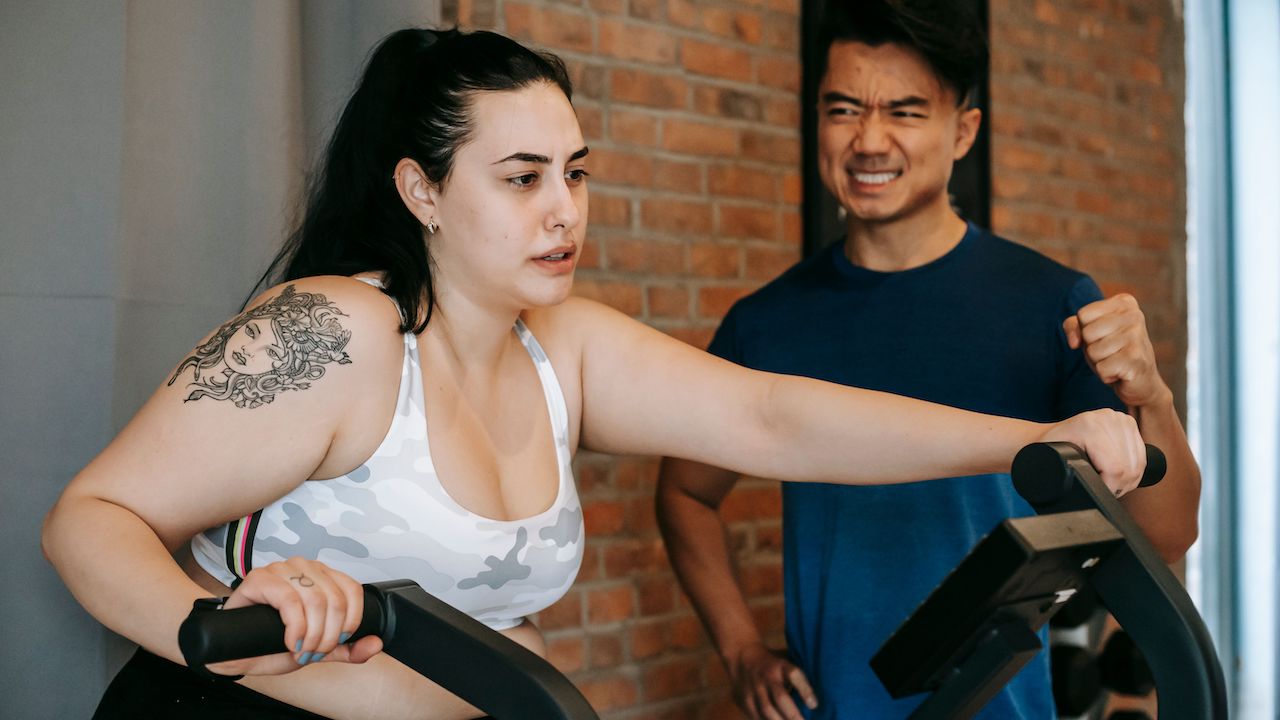

Are you looking for a way to help your clients achieve their physical therapy goals? Cardiovascular exercise is an important part of the equation. It can be used to maximize the effectiveness of physical therapy, helping people get back to full strength and health faster.
In this article, we’ll discuss why cardiovascular exercise is so important in physical therapy, how it should be incorporated into treatment plans, and what safety considerations need to be taken into account. We’ll also explore how cardio exercise fits into long-term physical therapy goals and how nutrition plays a role as well.
Finally, we’ll look at working with a physical therapist on incorporating cardiovascular exercise. By the end of this article, you’ll have a better understanding of why cardio exercise is essential in physical therapy and how best to utilize it for your patients’ benefit.
Physical therapy can make a world of difference in improving one’s quality of life, and it all starts with an understanding of the basics.
Physical therapists are medical professionals who help people recover from injury or illness through personalized therapy sessions. These sessions involve exercises that range from light stretching to more strenuous activities such as running, swimming, or weight lifting.
Check out our complete guide to physiotherapy to know everything it has to offer.
One important component of physical therapy is cardiovascular exercise, which trains the heart and lungs to work more efficiently and reduces fatigue. Cardiovascular exercise also helps to improve overall health by increasing bone density, reducing stress levels, and lowering cholesterol levels.
Through regular physical therapy sessions that incorporate cardiovascular exercise, patients can experience improved strength, flexibility, balance, and coordination — all essential for enjoying an active lifestyle!
Through increased physical strength and endurance, reduced risk of injury, and improved balance and coordination, cardiovascular exercise can have major benefits on your health.
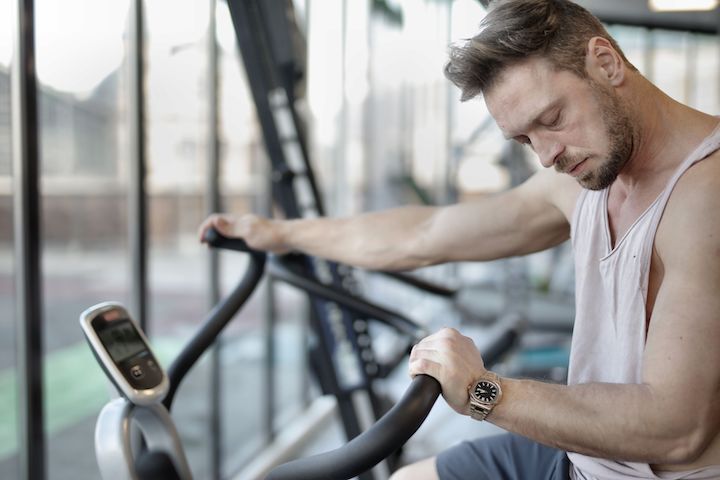 Photo Credit: Andrea Pacquadio
Photo Credit: Andrea Pacquadio
Improved physical strength and endurance can help you to perform everyday tasks more easily while reducing the risk of injury from overexertion or fatigue.
Improved balance and coordination will help you become more agile in your movements, which can be beneficial for those recovering from an injury or surgery.
By engaging in regular cardiovascular exercise, you can not only increase your overall strength and endurance but also reduce the risk of potential health issues.
Cardio workouts on machines such as ellipticals, treadmills, stationary bikes and rowers are great for increasing your heart rate and improving your breathing. Additionally, these types of exercises help to strengthen muscles throughout the body.
Here are some benefits that come with improved physical strength and endurance through cardio:
Cardiovascular exercise is an effective way to improve both physical strength and endurance. With regular workouts, you can benefit from improved muscle tone, a better range of motion in joints and a reduced risk of injury.
Moreover, it’s important to remember that cardio equipment such as ellipticals or treadmills should be used in conjunction with muscle-strengthening exercises such as weightlifting or callisthenics for optimal results.
Taking part in regular cardiovascular exercises will help you achieve increased physical strength and endurance so you can continue leading a healthy lifestyle well into the future! Explore more specific methods of strength training in physical therapy.
Regular physical activity not only increases your strength and endurance, but it can also help protect your body from injury. By incorporating cardiovascular exercise into physical therapy, you can reduce the risk of injury by improving flexibility, balance, and coordination.
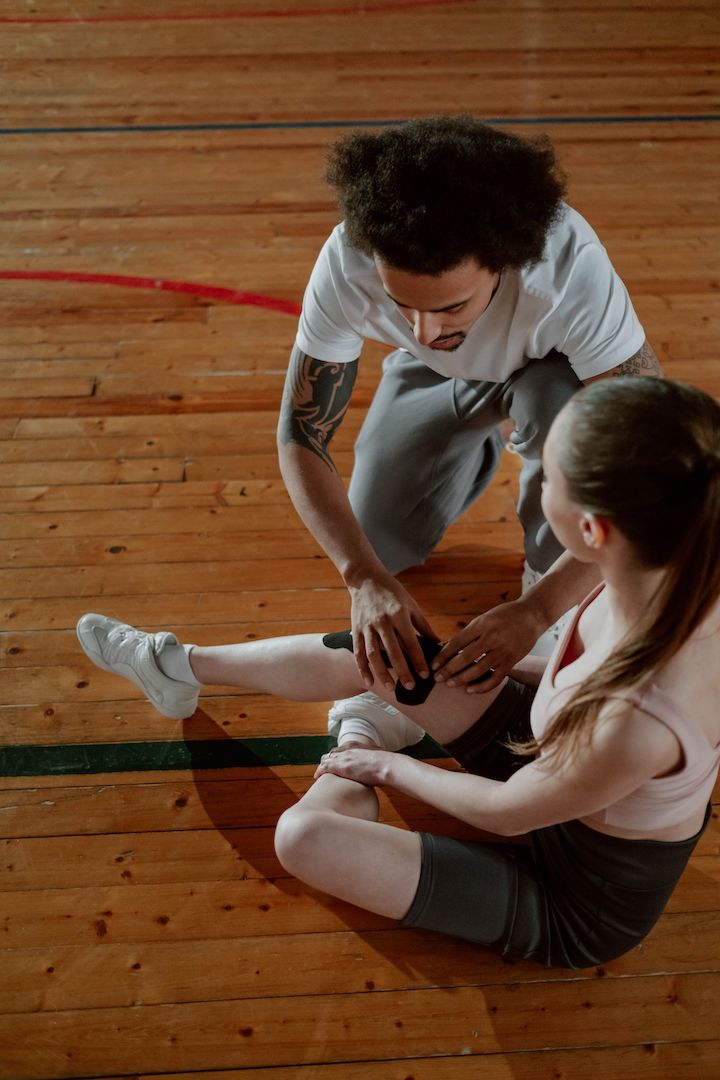 Photo Credit: Cottonbro
Photo Credit: Cottonbro
Injury prevention is essential for maintaining long-term health and wellness. Through regular stretching techniques as part of a physical therapy program, you will increase your range of motion and movement throughout your body. This allows for more efficient movements that are less likely to cause strain or overexertion.
Additionally, strengthening muscles helps to provide support to other parts of the body while engaging in activities such as running or playing sports. With increased muscular strength and stability comes a reduced likelihood of developing an overuse injury or stress fracture due to excessive force on certain areas of the body.
Be sure to see our exclusive guide to injury prevention through physical therapy in its entirety as well.
All in all, when done properly with guidance from a trained professional, cardiovascular exercise can be extremely beneficial to preventing injuries during physical activity.
Enhancing your balance and coordination through physical therapy can help you move more efficiently and confidently, making it easier to tackle any activity.
Stability training is an important part of physical therapy that helps with improving balance, posture, strength, and coordination. Through stability training exercises such as single-leg balancing drills and standing on a foam pad or Bosu ball while performing various movements, you’ll develop a greater sense of body awareness while improving your overall movement quality.
Want to learn more about stability training? See a guide to why balance training is so important to physical therapy.
In addition to stability training techniques, physical therapists also use the mind-body connection to improve the efficiency of movement patterns. By focusing on the mental aspects of exercise such as breathing techniques and visualization tools, you can better understand how to achieve optimal performance for any activity.
This type of practice will not only increase your coordination but also increase your confidence in performing everyday activities.
Let’s start by discussing running as a form of cardiovascular exercise. Running is a great way to get your heart rate up and improve overall physical health. It can be done outdoors or on a treadmill, and it can also be adapted for different levels of physical fitness.
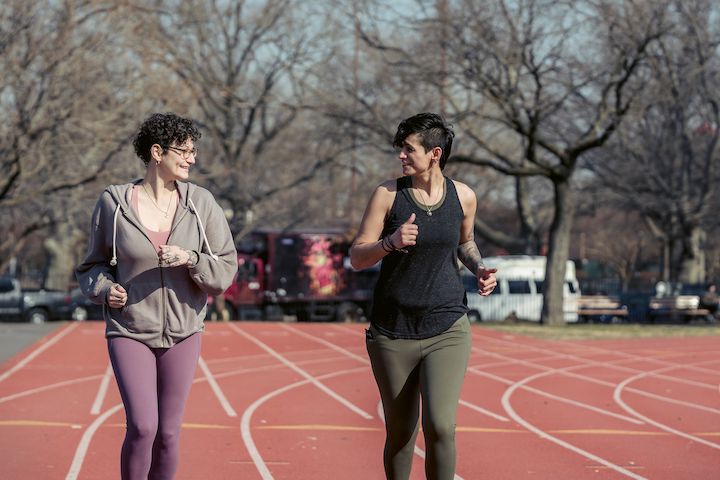 Photo Credit: Sarah Chai
Photo Credit: Sarah Chai
Moving onto swimming, this type of exercise increases flexibility, builds endurance, and strengthens muscles throughout the body.
Lastly, biking is another good choice for improving aerobic capacity while being low impact on joints in comparison to running or other forms of exercise.
Running is a great way to get your body moving and work out those muscles! Whether you’re a beginner or an experienced runner, it can be a fantastic way to stay active, improve your physical and mental health, and increase your breath control.
With just a pair of shoes and some determination, you’ll be able to reap the benefits of running. Whether it’s on the treadmill or outside on trails, running provides an effective cardiovascular workout that helps strengthen both your lungs and heart. It also gives you more energy throughout the day while helping reduce stress levels by releasing endorphins.
Additionally, running can help with improving posture as well as help tone up muscles all over your body. So take the time to lace up those sneakers and get out there for some much-needed exercise!
Soaking up some sun while getting a great workout? Swimming is the perfect way to do both! Not only can it help to increase strength, endurance, and flexibility, but swimming can also improve cardiovascular health.
 Photo Credit: Mali Maeder
Photo Credit: Mali Maeder
In physical therapy, water aerobics is an excellent form of exercise that helps patients regain range of motion and mobility in their joints. Swimming or taking part in aquatic activities such as stair climbing can help increase muscle strength, reduce joint pain and stiffness caused by arthritis or injury, and improve balance and coordination.
Learn more in-depth about how aquatic therapy can help the injury recovery process for anybody.
Swimming provides an effective full-body workout due to its low-impact nature. As you move through the water, your body has to work harder than on land due to the resistance of the water, which helps build strong muscles without overstressing them. It’s also a great way for people recovering from injury or with medical conditions like asthma or COPD (chronic obstructive pulmonary disease) to get active without straining their bodies further.
The buoyancy of the water supports your body weight so that you don’t have to worry about putting too much strain on any one area, allowing you to enjoy improved fitness levels without compromising your health.
Swimming is an excellent way to get cardiovascular exercise, but don’t forget about biking! Biking can be just as beneficial for physical therapy and for overall heart health.
It’s a great way to improve your cardiovascular fitness without the stress of high impact on your joints. Biking also helps you build leg muscle strength and endurance, which will help you feel better both physically and mentally. Additionally, it relieves stress since cycling outdoors gives you the opportunity to enjoy nature while getting your heart rate up.
Not only that, but it can be beneficial in reducing fatigue, improving cognitive function, and boosting energy levels—all important components of physical therapy recovery.
Cycling up hills or jogging along trails can be an invigorating way to get the body moving and reap the benefits of cardio in physical therapy. Incorporating high-intensity interval training (HIIT) into your physical therapy routine is one great way to maximize the effects of aerobic and anaerobic exercise.
Here are some tips on how to incorporate HIIT into your physical therapy program:
By incorporating high-intensity interval training into your physical therapy plan, you can help ensure that you reap all the rewards that come with regular cardiovascular exercise while continuing on the path toward recovery from injury or illness!
Now that you know how to incorporate cardio exercise into physical therapy, it’s important to consider the safety of your patients. When performing any type of physical activity, it’s essential to have a positive attitude and focus on proper form. This allows for optimal results while preventing injuries from occurring.
Safety considerations must be taken into account when using any type of exercise in physical therapy. It’s important for therapists to assess their patients’ abilities as well as their medical history before beginning any type of exercise program.
 Photo Credit: Dimitry Limonov
Photo Credit: Dimitry Limonov
Therapists should also monitor the intensity and duration of exercises, making sure they’re appropriate for each patient’s needs and limitations. Additionally, all patients should be provided with instructions on proper technique and form in order to avoid injury during the exercises.
Tracking your progress is key to ensuring that you’re getting the most out of your physical therapy. In fact, studies have shown that a mere 5% increase in activity can lead to a 15% decrease in disability.
When it comes to cardiovascular exercise, monitoring intensity and tracking results are essential for ensuring you reach your goals. This will not only help you get the most out of your physical therapy sessions, but it will also give you peace of mind knowing that you’re making progress and staying safe while doing so.
Your physical therapist can help guide you when it comes to monitoring intensity and tracking results. Your physical therapist may recommend using a heart rate monitor or other device to track progress over time, as well as suggest ways to adjust workout intensity based on how your body responds.
Additionally, they can provide guidance on proper form when performing exercises and check in with you during each session to make sure goals are being met safely and successfully.
By consistently monitoring your progress and adjusting workout intensity according to how your body responds, you can reach your long-term physical therapy goals.
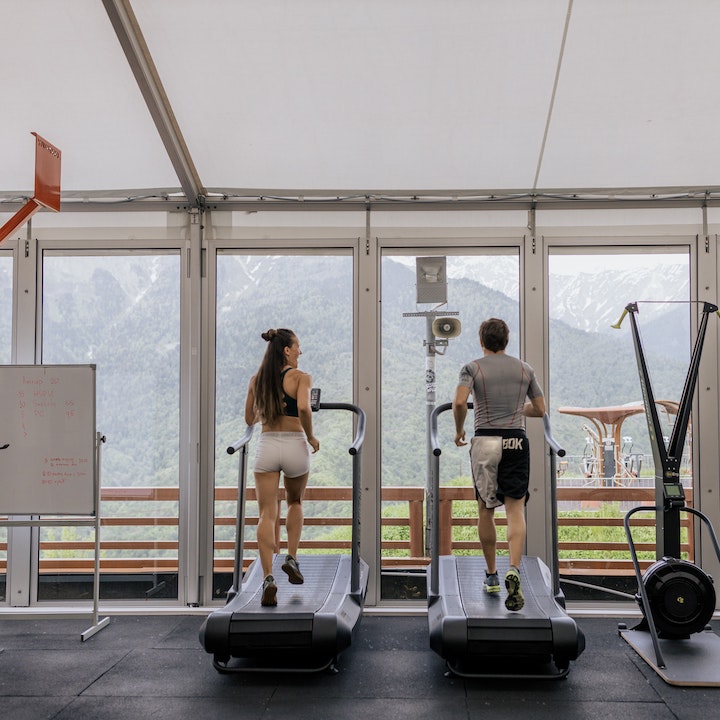 Photo Credit: Anastasia Shuraeva
Photo Credit: Anastasia Shuraeva
Cardiovascular exercise is an important part of any physical therapy program, as it can help reduce stress levels, improve mental clarity, and increase overall physical fitness.
Reducing stress:
Improving mental clarity:
Increasing physical fitness:
Staying aware of how your body feels during physical activities is key to achieving your goals, so take the time to observe and monitor any changes you experience.
Monitoring your symptoms while engaging in cardiovascular exercise can help maximize the benefits of physical therapy. It’s important to be mindful of any psychological effects that may arise, such as feelings of anxiety or depression, and use monitoring tools like heart rate monitors or step counters to track progress toward your long-term goals.
![[Photoshoot from the back] An ethnic man using a cardio machine while exercising and tracking his vitals on the screen.](https://reliefly.com.au/wp-content/uploads/2023/06/cardio-monitoring-device-exercise-3.jpg) Photo Credit: Ona Freeseed
Photo Credit: Ona Freeseed
It’s also important to note any physical changes that occur after a cardio session—such as increased fatigue, muscle soreness, or joint pain—as these may indicate an injury or medical condition.
By paying attention to both mental and physical discomfort during and after a workout, it will become easier to identify potential causes and make adjustments in order to remain safe while making progress towards those long-term physical therapy goals!
Eating right is essential to achieving your physical therapy goals, and it’s important not to overlook the role nutrition plays. Making sure that you follow dietary guidelines and engage in meal planning can be a key part of making sure that your cardiovascular exercise pays off.
Without considering what goes into your body, it can be difficult to maximize the effects of physical therapy treatments – so staying mindful of what you eat is key!
Here’s in-depth how nutrition plays a big role in physical therapy overall.
Regulating your diet isn’t just about controlling calories or cutting out unhealthy food; it’s about understanding how different types of food affect your body. Eating foods rich in vitamins and minerals can help ensure that you have enough energy for all of the activities associated with physical therapy.
It also helps support a healthy immune system, which is especially important if you’re putting extra effort into improving your overall health by pushing yourself during workouts.
Making smart decisions about nutrition will ensure that all the time spent on cardiovascular exercise pays off in an effective way.
Working with a physio can help you reach your goals faster, and it’s worth considering if you’re serious about getting healthier!
When working with a physical therapist, they’ll be able to provide you with motivation techniques that will help you stay on track while also monitoring your progress.
Your physical therapist will not only ensure that you are incorporating cardiovascular exercise into your routine but they will also be able to address any mental health issues which may be preventing you from reaching your physical therapy goals.
 Photo Credit: Mikhail Nilov
Photo Credit: Mikhail Nilov
They have the expertise required to customize an exercise program specifically for you, based on what works best for your body and lifestyle.
Your physical therapist can also work with other healthcare professionals involved in your care plan such as physicians or nutritionists to ensure that all aspects of your health are being cared for both inside and outside of the gym.
With their guidance and support, they can provide necessary modifications to exercises when needed so that you don’t injure yourself while still receiving the benefits of cardiovascular exercise.
Searching for a qualified physical therapist can feel intimidating, but it doesn’t have to be. Start by considering your exercise safety and physical safety needs – then find the best fit for you.
Think of it like finding the perfect partner – you want someone who’s experienced and knowledgeable, while also being reliable and trustworthy. Do some research on local therapists in your area and compare reviews to get an idea of what people say about their services.
Once you’ve narrowed down your choices, take time to ask questions during a consultation so that you can make sure they’re a good fit before committing. Here are more things to look out for when finding the right physiotherapist for you.
You don’t need to leave your house or even have special equipment to get a good cardio workout. Bodyweight exercises like jumping jacks, high knees, and burpees are great for getting your heart rate up and breaking a sweat.
If you’re looking for something more fun and dance-oriented, aerobic dance classes offer an entertaining way to get your blood pumping.
No matter what type of cardio workout you choose, these exercises will help keep your body healthy and fit.
You may think that any type of cardiovascular exercise is suitable for physical therapy, but you’d be wrong! High-intensity interval and low-impact aerobic exercises may not be the best choice for everyone.
While these exercises can provide significant health benefits, they may not be appropriate for those with existing medical conditions or injuries. For instance, high-intensity interval training and certain types of low-impact aerobic activity could put too much strain on the body and cause further injury.
So when it comes to physical therapy, always discuss your options with your doctor first – they’ll help you find an exercise program that’s right for you!
You may be wondering what dietary recommendations are best for supporting physical therapy. The answer depends on your individual health needs, but in general, there are some nutrition guidelines that can help you get the most out of your physical therapy sessions.
Eating a balanced diet with plenty of vitamins, minerals, and proteins is key to providing yourself with the energy needed to keep up with your physical therapy regimen. Additionally, focusing on foods that are rich in dietary benefits such as omega-3 fatty acids and antioxidants can help reduce inflammation and boost recovery time.
Making healthy choices when it comes to food will ensure you get the most out of your physical therapy program.
You’ve probably heard that cardiovascular exercise is important for physical therapy, but you may not know how often to do it.
A good starting point is to consult with a physical therapist or physician to determine the best frequency and intensity of your workouts. For example, if you have certain risk factors like age or pre-existing conditions, they can help you assess the right level of activity for you.
Additionally, depending on your recovery time between sessions and goals in therapy, they can advise on how much cardiovascular exercise would be beneficial for you. With their guidance and support, you’ll be able to make sure that your physical therapy program incorporates enough cardio for maximum benefit!
You’ve learned the importance of incorporating cardiovascular exercise into your physical therapy plan. Not only does it help build strength and increase stamina, but it can also improve overall well-being.
Now that you understand the role cardio plays in physical therapy, you can begin to make small changes to your routine and become stronger over time. With the guidance of your physician and physical therapist, you’ll be able to reach your goals safely and efficiently.
Remember, regular exercise is key to achieving long-term success, so don’t forget to take care of yourself!
There are no results matching your search.
Reset